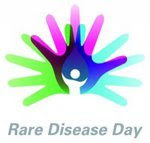Analysis of Circulating Tumor DNA to Monitor Metastatic Breast Cancer
March 13, 2013DOI: 10.1056/NEJMoa1213261
Background
The management of metastatic breast cancer requires monitoring of the tumor burden to determine the response to treatment, and improved biomarkers are needed. Biomarkers such as cancer antigen 15-3 (CA 15-3) and circulating tumor cells have been widely studied. However, circulating cell-free DNA carrying tumor-specific alterations (circulating tumor DNA) has not been extensively investigated or compared with other circulating biomarkers in breast cancer.Methods
We compared the radiographic imaging of tumors with the assay of circulating tumor DNA, CA 15-3, and circulating tumor cells in 30 women with metastatic breast cancer who were receiving systemic therapy. We used targeted or whole-genome sequencing to identify somatic genomic alterations and designed personalized assays to quantify circulating tumor DNA in serially collected plasma specimens. CA 15-3 levels and numbers of circulating tumor cells were measured at identical time points.Results
Circulating tumor DNA was successfully detected in 29 of the 30 women (97%) in whom somatic genomic alterations were identified; CA 15-3 and circulating tumor cells were detected in 21 of 27 women (78%) and 26 of 30 women (87%), respectively. Circulating tumor DNA levels showed a greater dynamic range, and greater correlation with changes in tumor burden, than did CA 15-3 or circulating tumor cells. Among the measures tested, circulating tumor DNA provided the earliest measure of treatment response in 10 of 19 women (53%).Conclusions
This proof-of-concept analysis showed that circulating tumor DNA is an informative, inherently specific, and highly sensitive biomarker of metastatic breast cancer. (Funded by Cancer Research UK and others.)


































No hay comentarios:
Publicar un comentario